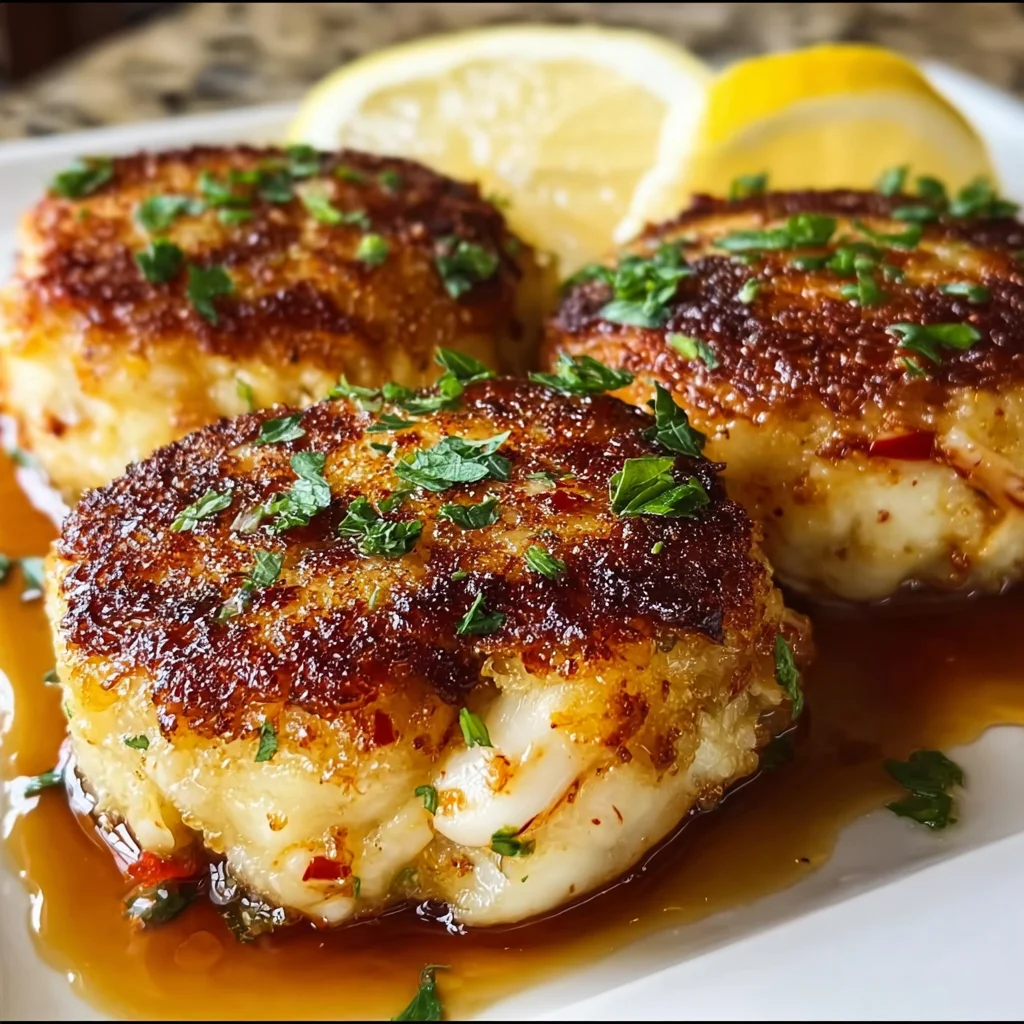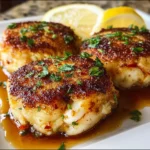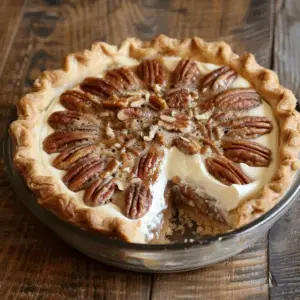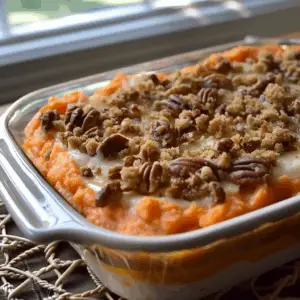Baltimore-style crab cakes are more than just a dish — they’re a regional culinary icon. Known for their delicate texture, rich crab flavor, and minimal filler, these crab cakes are often considered the gold standard in seafood cuisine. Whether you’re a Maryland native or just a seafood enthusiast, this recipe offers a taste of the Chesapeake Bay’s best.
Unlike other versions that are heavy on breading and spices, Baltimore-style crab cakes focus on showcasing the sweetness and quality of the lump crab meat. Originating from the Chesapeake Bay, this recipe reflects the area’s rich seafood traditions, where crab fishing is a way of life. To truly understand the dish, it’s essential to know its ingredients, preparation method, and cultural significance.
Crab cakes are part of the larger American seafood cuisine and have become a beloved staple across the country. Their roots, however, are deeply embedded in Maryland’s culinary history. With core ingredients like Old Bay seasoning, Worcestershire sauce, mayonnaise, and lump crab meat, this iconic dish continues to captivate food lovers. (Learn more about the influence of Chesapeake Bay on regional food here. For tips on plating and serving, check out this Pinterest board on crab cake presentation ideas).
🧾 Introduction to Baltimore-style crab cakes
Baltimore-style crab cakes are the embodiment of minimalism done right. By using only a few high-quality ingredients, this recipe allows the sweet, succulent flavor of crab meat to shine. Unlike many other regional crab cakes that might mask the seafood with spices or heavy fillers, Baltimore-style cakes are all about preserving the integrity of the crab.
They are traditionally pan-fried in butter, which creates a golden crust without overpowering the meat. These crab cakes are perfect for holidays, family dinners, or special occasions, but simple enough to make on a weeknight.
Key characteristics include:
-
Use of lump crab meat
-
Signature Old Bay seasoning flavor
-
Minimal use of fillers like breadcrumbs
-
Light pan-frying technique
-
Garnish with lemon wedges and fresh parsley
🕰️ History of crab cakes in Baltimore
The roots of the Baltimore crab cake can be traced back to the early days of Chesapeake Bay fishing communities. The blue crab has long been abundant in the region, and locals developed creative ways to cook with this prized shellfish.
By the early 20th century, recipes resembling today’s crab cakes began appearing in Maryland cookbooks. They emphasized the use of fresh crab meat and simple binders. The addition of Old Bay seasoning, invented in the 1940s, became the signature touch that turned local crab cakes into a statewide icon.
The state of Maryland even designated crab as its official state crustacean, further cementing its cultural significance. Learn more about the cultural background in the Culture of Maryland.
While other parts of the U.S. have their own take, Baltimore crab cakes are known for staying true to their roots — minimal seasoning, fresh ingredients, and a texture that celebrates the crab itself.
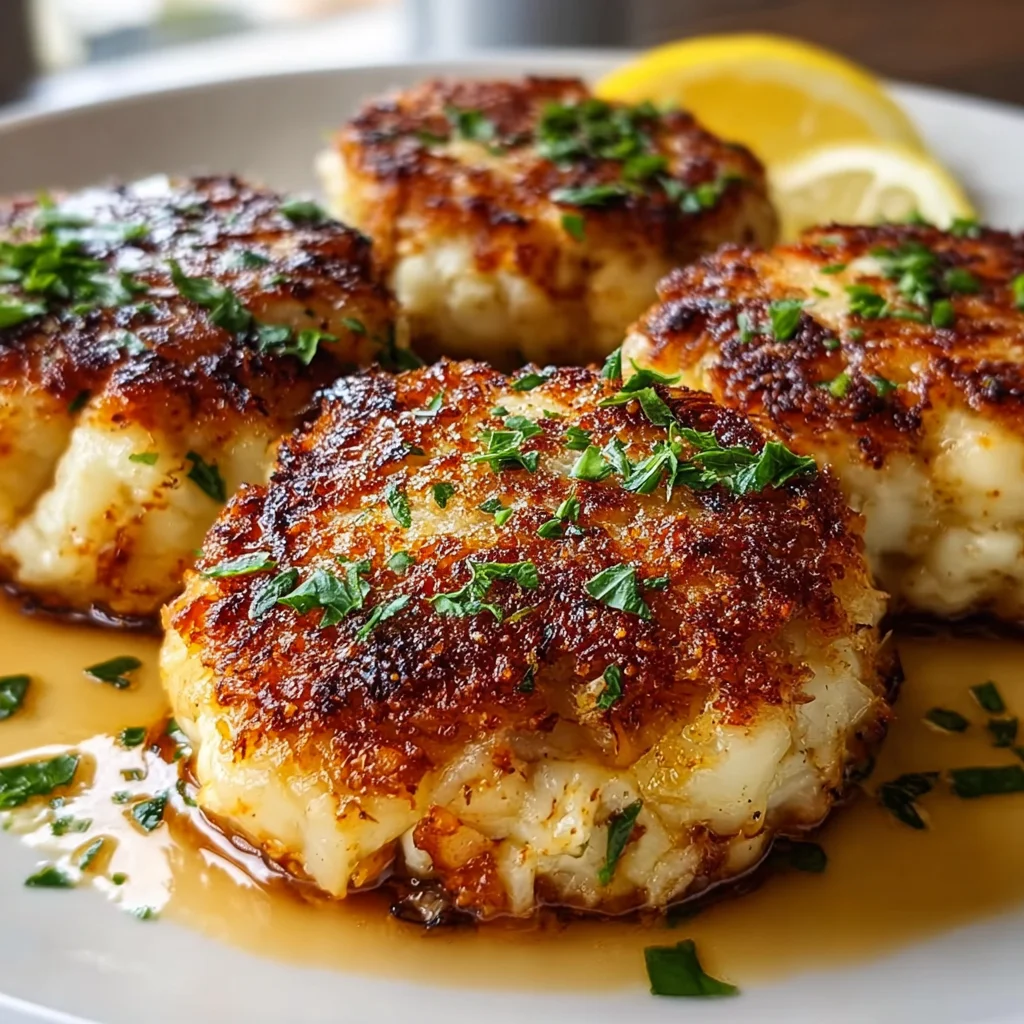
🧂 Key ingredients breakdown
Creating the perfect Baltimore-style crab cake starts with the right ingredients. Each element plays a crucial role in delivering that authentic flavor and texture.
Lump crab meat
The star of the dish is lump crab meat, ideally from the blue crab. It’s known for its:
-
Mild, sweet flavor
-
Tender texture
-
Large, flaky pieces
Avoid claw meat, as it has a stronger taste and tougher texture. Fresh or pasteurized lump crab meat is ideal. For more about its quality and sourcing, see Lump crab meat.
Old Bay seasoning
Old Bay is a spice blend developed in Baltimore. It includes celery salt, paprika, black pepper, and red pepper flakes. A small amount goes a long way in adding a savory kick without overpowering the crab. Learn about its origins here.
Mayonnaise and Dijon mustard
These two ingredients provide:
-
Creaminess and tang
-
Moisture retention
-
A subtle flavor that enhances the crab
Mayonnaise is especially important for binding the crab meat without making it dense. (More on mayonnaise).
Worcestershire sauce
This umami-rich liquid seasoning deepens the flavor profile and adds complexity. It’s a common binder in seafood dishes and works well in small amounts. Worcestershire sauce explained.
Egg and breadcrumbs
The egg acts as a binder, holding the mixture together without adding bulk. Use just enough breadcrumbs to provide structure while maintaining a light, crab-forward texture. (Details on breadcrumbs).
Fresh parsley
Chopped parsley adds a touch of herbal freshness and color. It’s commonly used as both an ingredient and garnish in seafood dishes.
🦞 Why use lump crab meat?
Lump crab meat is essential to Baltimore-style crab cakes. Its soft, flaky texture and sweet flavor allow the crab to remain the star. Compared to backfin or claw meat, lump meat:
-
Holds together better when shaped into cakes
-
Offers large, satisfying chunks
-
Has a milder, more appealing flavor
While claw meat is less expensive, it lacks the premium taste and delicate texture of lump crab. If lump crab is too costly, a mixture of backfin and lump is an acceptable compromise.
Avoid using canned crab if possible. Pasteurized refrigerated crab in tubs is the best option for home cooks seeking quality without breaking the bank.
🍽️ Preparing your crab cakes the right way
Making great Baltimore crab cakes starts with how you prepare the mixture. Overworking the ingredients can lead to dense or broken cakes, so it’s essential to be gentle.
Step-by-step preparation:
-
Whisk wet ingredients: Combine one large egg, 2 tablespoons of mayonnaise, 1 teaspoon of Dijon mustard, 1 teaspoon Worcestershire sauce, and ½ teaspoon Old Bay seasoning.
-
Add fresh parsley: Mix in 1 tablespoon of chopped parsley.
-
Fold in crab and breadcrumbs: Gently add 1 lb lump crab meat and ½ cup breadcrumbs, folding carefully to avoid breaking the crab pieces.
-
Form the patties: Divide the mixture into 6 equal portions and shape into cakes.
-
Chill before frying: Refrigerate for 30 minutes to help the cakes hold their shape.
This chill time is crucial. It firms up the cakes and reduces the risk of them falling apart during cooking.
🍳 Frying the perfect crab cake
The traditional cooking method for Baltimore-style crab cakes is pan-frying. This delivers a golden-brown crust and moist interior.
Tips for perfect frying:
-
Use 2 tablespoons of butter in a non-stick skillet.
-
Heat over medium heat until the butter is melted and bubbling.
-
Cook crab cakes 3–4 minutes per side or until crispy and golden.
Butter is preferred over oil because it adds flavor and helps brown the cakes evenly. Be sure not to overcrowd the pan, and resist flipping the cakes too soon to prevent breakage.
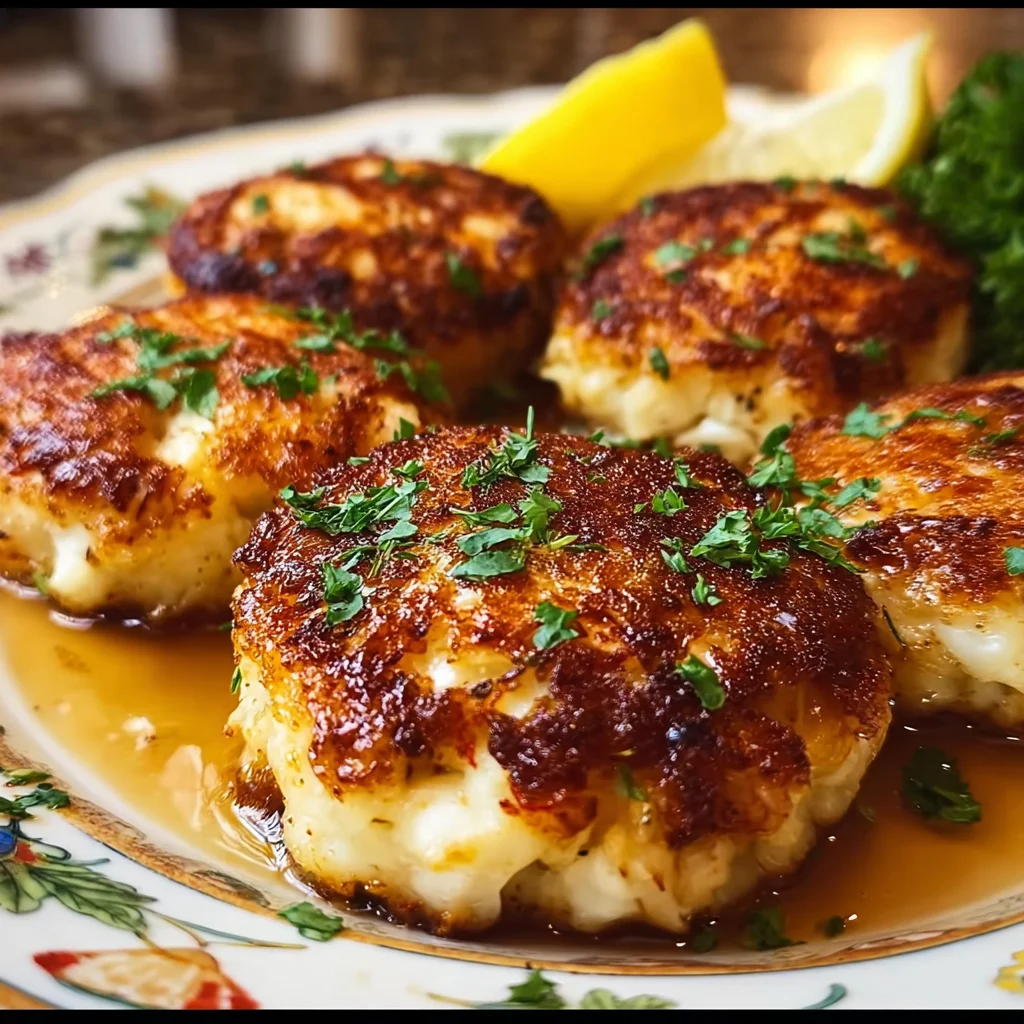
🔥 Baking or air-frying variations
While pan-frying is traditional, you can also bake or air-fry crab cakes for a lighter version.
Baking:
-
Preheat oven to 375°F (190°C).
-
Place cakes on a greased baking sheet.
-
Bake for 12–15 minutes, flipping halfway.
Air-frying:
-
Preheat air fryer to 370°F (188°C).
-
Spray crab cakes lightly with oil.
-
Air fry for 8–10 minutes, flipping once.
These methods reduce fat content while maintaining crispness. However, the texture may differ slightly from pan-frying.
🍋 Serving suggestions
Baltimore-style crab cakes are best served with simple, fresh sides that complement their flavor.
Popular accompaniments:
-
Lemon wedges and chopped parsley (classic garnish)
-
Creamy coleslaw
-
Roasted corn on the cob
-
Garden salad with vinaigrette
-
Sweet potato fries
For dips, consider remoulade, tartar sauce, or lemon aioli. A side of steamed veggies or mashed potatoes also works well for a complete meal.
If you’re looking for side dish ideas, browse this Pinterest seafood board.
❄️ Storage and reheating tips
Leftover crab cakes can be stored and reheated without losing their quality — if done properly.
Storage:
-
Refrigerate in an airtight container for up to 3 days.
-
Freeze (uncooked or cooked) up to 3 months; wrap individually in foil and place in a freezer-safe bag.
Reheating:
-
Oven: 350°F for 10–12 minutes
-
Skillet: Low heat with a splash of butter
-
Air fryer: 370°F for 5 minutes
Avoid microwaving as it can make the cakes soggy and diminish flavor.
⚠️ Common mistakes to avoid
Even seasoned cooks can make errors with crab cakes. Here are the top mistakes — and how to avoid them.
-
Using too much filler: More breadcrumbs don’t make better cakes. Stick to ½ cup for 1 lb of crab.
-
Overmixing: Gently fold ingredients to keep the crab intact.
-
Skipping chill time: Refrigeration helps cakes hold together.
-
Overcooking: Pan-fry only until golden; don’t dry them out.
Avoiding these pitfalls ensures a light, flavorful crab cake every time.
🌎 Crab cake variations across the U.S.
While Baltimore-style crab cakes are revered, other regions offer their own takes.
Key differences:
-
Louisiana: Spicier, often includes Cajun seasoning or hot sauce.
-
New England: May include crushed crackers or mashed potatoes as binders.
-
West Coast: Often served with avocado or citrus-based sauces.
Each version reflects local flavors, but none match the purity of Maryland’s crab-first philosophy.
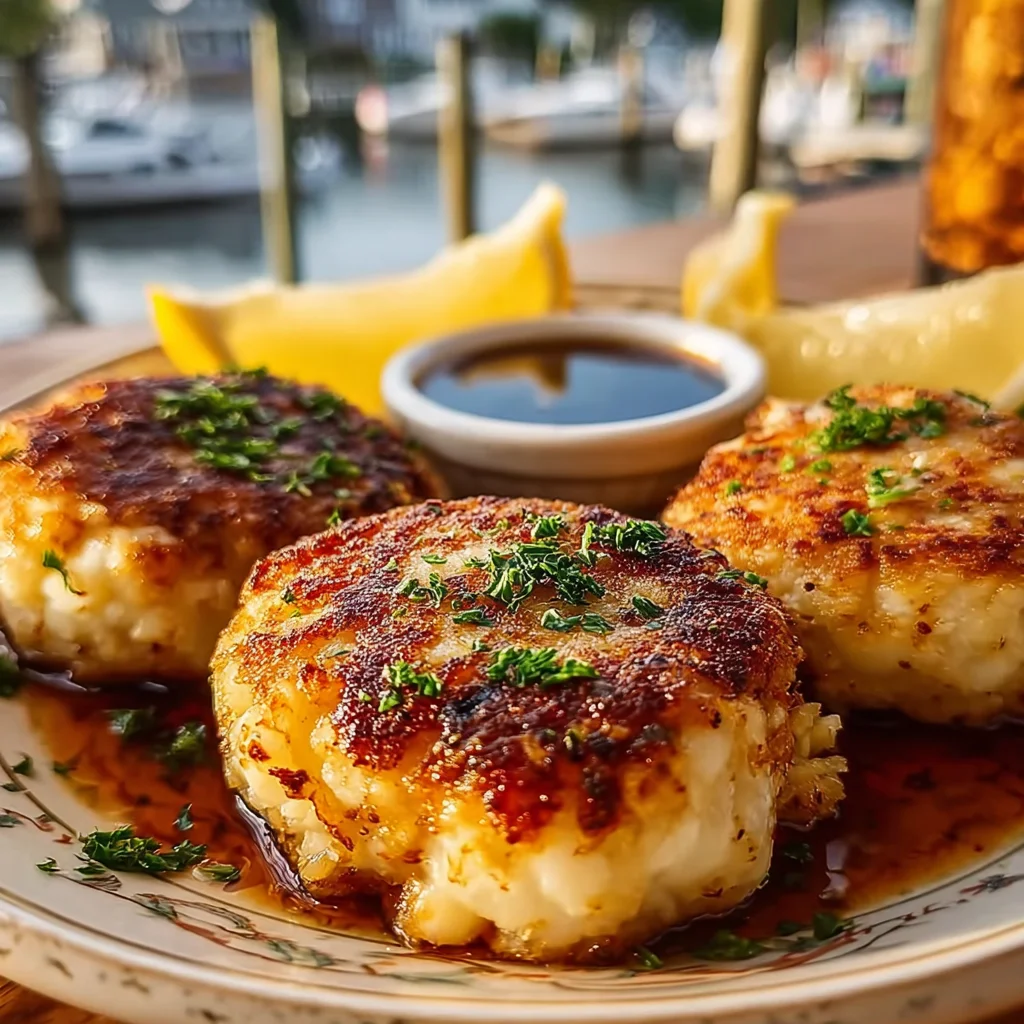
❓ FAQs
What is the difference between Maryland and Baltimore crab cakes?
Baltimore crab cakes refer to a specific style from Maryland that uses minimal filler, lump crab meat, and pan-frying. Some Maryland recipes are baked or include more seasonings.
Can I use canned crab meat for crab cakes?
Canned crab meat can be used, but it lacks the texture and flavor of fresh or refrigerated lump crab meat.
Why do my crab cakes fall apart when frying?
This usually happens from overmixing or not chilling the cakes before cooking. Always refrigerate for at least 30 minutes.
What is the best binder for crab cakes?
A combination of egg and mayonnaise is ideal. It keeps the cakes moist without making them dense.
Do you put celery in crab cakes?
Traditional Baltimore crab cakes do not include celery. The focus is on the crab meat.
What dipping sauces go well with crab cakes?
Popular choices include remoulade, tartar sauce, and lemon aioli. These enhance the flavor without overpowering the crab.
🧭 Final thoughts
Baltimore-style crab cakes remain a timeless favorite because of their simple preparation and bold crab flavor. By sticking to high-quality ingredients and using minimal fillers, this recipe captures the essence of Maryland cuisine.
Remember:
-
Use fresh lump crab meat
-
Handle with care
-
Let the crab shine
Whether you’re preparing them for a family dinner or special event, Baltimore crab cakes never fail to impress. To learn more about how this dish fits into the broader culinary scene, explore the role of American seafood cuisine here.
For visual inspiration and plating styles, see our Pinterest board on crab cake plating. And if you’re curious about the regional heritage that birthed this iconic dish, dive into the Culture of Maryland.
Enjoy your journey through the flavors of the Chesapeake Bay!
PrintBaltimore-Style Crab Cakes
Classic Baltimore-style crab cakes made with sweet lump crab meat, a touch of Old Bay seasoning, and minimal filler. This authentic Maryland recipe delivers crispy-on-the-outside, tender-on-the-inside crab cakes that highlight the true flavor of the sea.
- Prep Time: 15 minutes
- Chill time: 30 minutes
- Cook Time: 10 minutes
- Total Time: 55 minutes
- Yield: 6 crab cakes (Serves 3–6 people) 1x
- Category: seafood
- Method: Baked
- Cuisine: American
Ingredients
For the Crab Cakes
1 large egg
2 tablespoons mayonnaise
1 teaspoon Dijon mustard
1 teaspoon Worcestershire sauce
½ teaspoon Old Bay seasoning
1 tablespoon fresh parsley, finely chopped
½ cup breadcrumbs (plain or panko)
1 lb lump crab meat, carefully picked over for shells
2 tablespoons butter, for frying
For Garnish (Optional)
Fresh parsley
Lemon wedges
Instructions
In a large mixing bowl, whisk together the egg, mayonnaise, Dijon mustard, Worcestershire sauce, and Old Bay seasoning until smooth. Stir in the chopped parsley.
Gently fold in the lump crab meat and breadcrumbs. Use a spatula or your hands to combine the mixture lightly, taking care not to break the crab lumps. The mixture should hold together but not be too dense.
Divide the mixture into 6 equal portions. Form each into a patty about 1-inch thick. Place them on a plate or tray and refrigerate for at least 30 minutes. This helps firm up the cakes and prevents them from falling apart during cooking.
In a large non-stick skillet, heat 2 tablespoons butter over medium heat. Once hot and bubbling, gently place the crab cakes in the pan. Cook for 3–4 minutes per side, or until golden brown and crisp. Avoid overcrowding the pan.
Transfer the crab cakes to a paper towel-lined plate. Garnish with fresh parsley and lemon wedges. Serve immediately with your favorite side dishes or dipping sauces like remoulade or tartar sauce.
Notes
-
Don’t overmix: This will break apart the lumps of crab and make the cakes too dense.
-
Breadcrumb tip: If using panko, crush lightly before mixing for a more even texture.
-
No crab shells: Always check crab meat carefully for shells before using.
-
Refrigeration is key: Chilling helps the cakes firm up and hold together when frying.
-
Lump vs. claw meat: Use lump for sweet, flaky texture. Avoid claw meat for this recipe.
